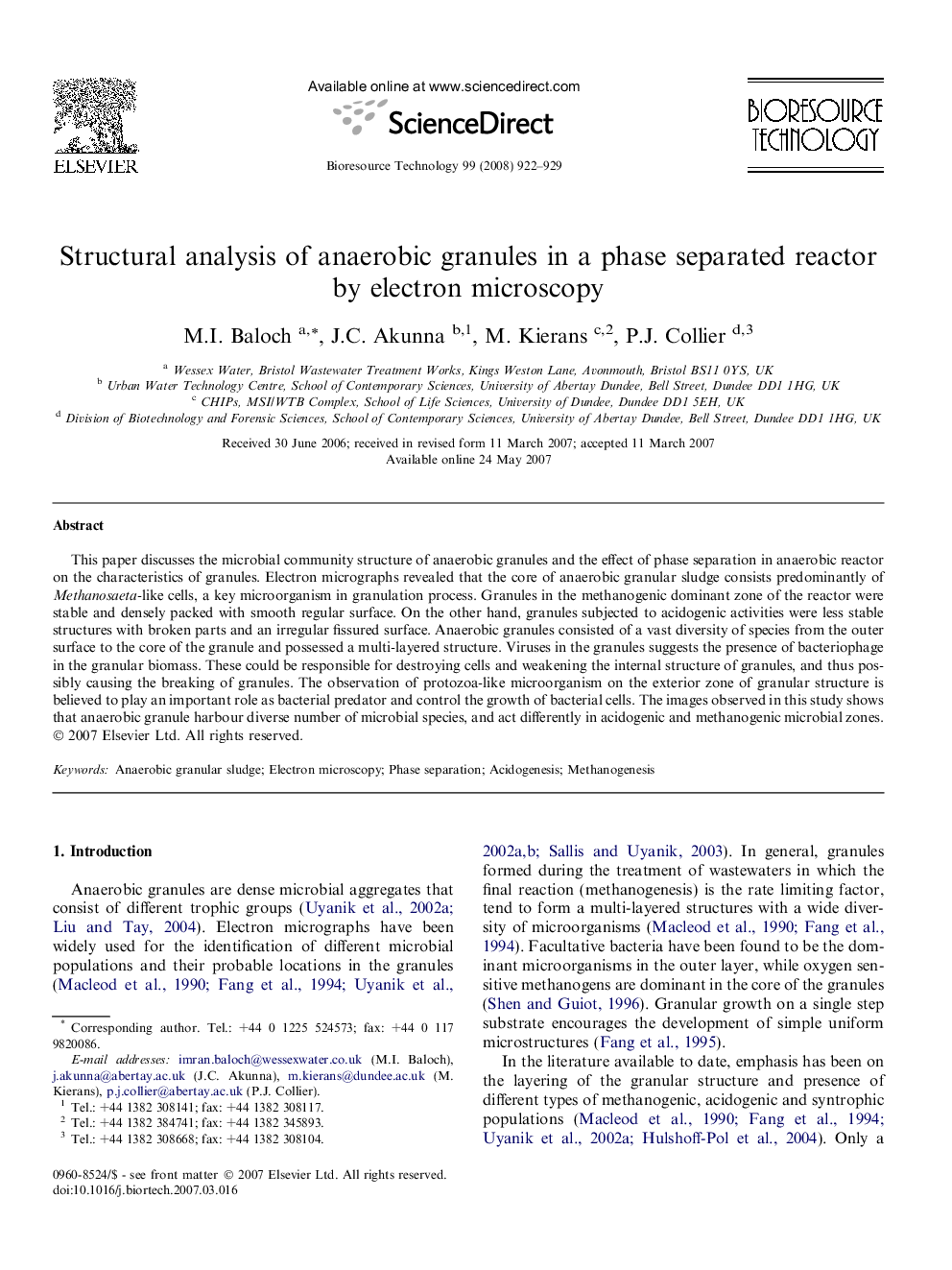| Article ID | Journal | Published Year | Pages | File Type |
|---|---|---|---|---|
| 685364 | Bioresource Technology | 2008 | 8 Pages |
This paper discusses the microbial community structure of anaerobic granules and the effect of phase separation in anaerobic reactor on the characteristics of granules. Electron micrographs revealed that the core of anaerobic granular sludge consists predominantly of Methanosaeta-like cells, a key microorganism in granulation process. Granules in the methanogenic dominant zone of the reactor were stable and densely packed with smooth regular surface. On the other hand, granules subjected to acidogenic activities were less stable structures with broken parts and an irregular fissured surface. Anaerobic granules consisted of a vast diversity of species from the outer surface to the core of the granule and possessed a multi-layered structure. Viruses in the granules suggests the presence of bacteriophage in the granular biomass. These could be responsible for destroying cells and weakening the internal structure of granules, and thus possibly causing the breaking of granules. The observation of protozoa-like microorganism on the exterior zone of granular structure is believed to play an important role as bacterial predator and control the growth of bacterial cells. The images observed in this study shows that anaerobic granule harbour diverse number of microbial species, and act differently in acidogenic and methanogenic microbial zones.
